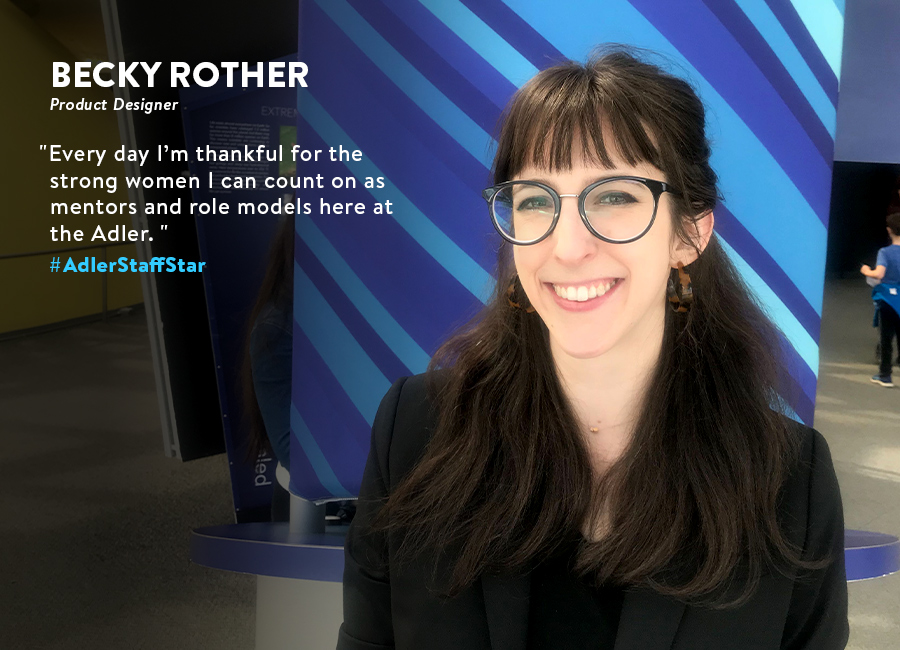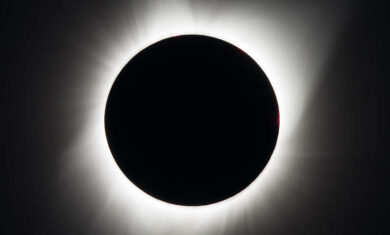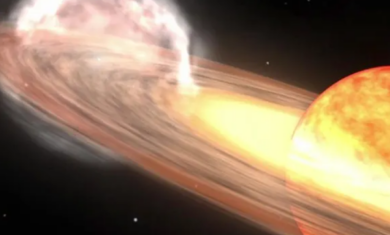In The Right Light, Space Doesn’t Seem So Big
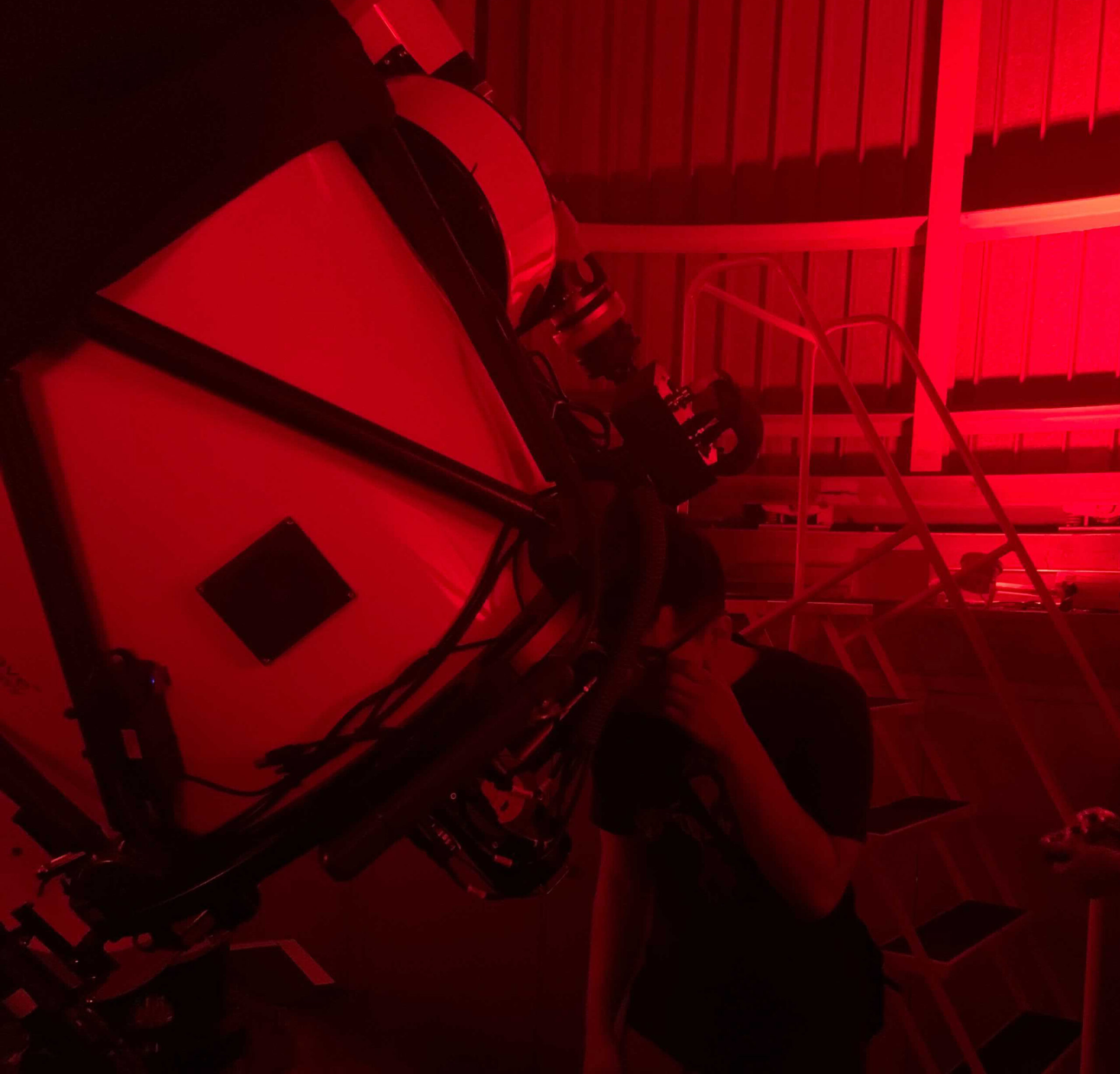
Header Image: A person observing through a telescope in July 2021 at the ‘Scopes at the Adler small-group experience inside the Adler Planetarium’s Doane Observatory.
I was in graduate school, working on a writing project about vision and light and the brain, when I looked through a real telescope for the first time.
The year before, I’d needed eye surgery, and I had attempted to quell my anxiety about it by learning everything I could about how eyes are supposed to work, where mine were going wrong, and why the surgery would (probably) help. A neurobiology professor I interviewed for the project tipped me off that Northwestern University’s Dearborn Observatory was open to the public in the warm-weather months.
I’m not sure how the observatory even came up. The professor told me about the experiments he ran in his lab, which looked at the way the individual neurons in the visual cortex fire in response to very specific patterns and movements of light. Vision may feel magical, but it’s not—it’s physical. A bunch of photons—particles of light—bounce off an object and then slam into the back of your eyeball, which converts their energy into a signal to your visual cortex. Each neuron recognizes a tiny piece of information about the bigger picture, and it’s only when huge numbers of neurons fire all at once that you can recognize an apple or a skydiver or the words you are reading.
Maybe I told the professor I had been reading Richard Feynman’s lectures about the strange properties of light. Maybe the professor just had a hunch that I was the kind of person who would remember what he said about the observatory all winter and then, several months later, make my way there for a chance to see something I had never seen before.
In any case, I did remember.
As I walked up the creaky old staircase to the telescope room, I could hear muffled voices and the squeaking of sneakers on a hardwood floor. At the top of the stairs, I pulled open the heavy iron door and stepped through the awkwardly short doorway into a big round room, bathed in red light. I had learned enough about eyes and light at this point to know that red light has a high wavelength and a low frequency compared to other colors of light, which means, among other things, that it won’t mess up your night vision.
Red light notwithstanding, the room was crackling with energy. Younger and older adults, big kids, little kids, everyone pointing up and firing questions at the physics undergrads who were running the computer that aimed the telescope. The whole sky mapped out on two big flat screens, every part of the cosmos just a click away. The domed roof rotating overhead as the telescope swiveled. There was the Moon. There was Arcturus, one of the brightest stars in the night sky. There was a cluster of stars packed so tightly it could have been so many specks of dust.
And there, for the grand finale, was Saturn.
What I saw through the telescope was not as crisp or as colorful or as beautiful as the photographs any standard Google search can deliver. It was small, grainy, and bright. But it took my breath away. I could see the rings. And something that had been dancing around the edges of my mind since I started learning about vision and light finally clicked into place.
The photons that were passing through that telescope had shot out of some colliding hydrogen atoms in the Sun, spent about 175,000 years bouncing around inside before they shot off of the surface, and then, about 80 minutes later, they had ricocheted off of Saturn, and now—another hour and change later—they were trapped in my eye, banging into my photoreceptor cells, changing my brain. Despite being so old, so vast, and so full of things I did not understand, the universe wasn’t separate from me. I was part of it. I was touching it. The story of those photons—the story of Saturn and the Sun and everything in every corner of the sky—that was my story, too.
I blinked and laughed and made way for the next person in line.
Look Up Through Our 24″ Reflecting Telescope
’Scopes at the Adler combines everything you love about our neighborhood telescope program, ’Scopes in the City, and brings it home to the Adler’s Doane Observatory!
Be among the first to look up at our universe through the largest publicly accessible telescope in the Chicagoland area during this group experience. You’ll join a small group of stargazers and the Adler’s public observing team to see the sky over Chicago like you’ve never seen it before. You’ll also learn how telescopes work and how to find bright stars and constellations using modern and historic tools—and you can try out a working replica of astronomer Galileo Galilei’s handmade telescope. View the upcoming schedule and get tickets today.
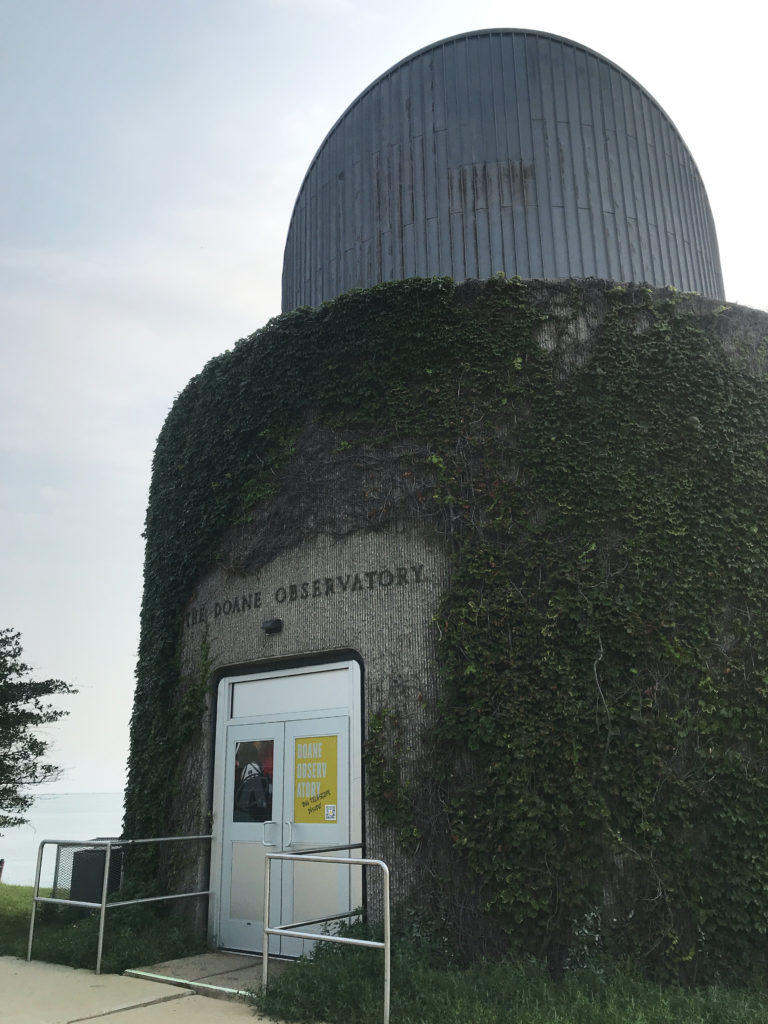
Learn From Our Astronomy Educators
Watch exclusive live episodes of Sky Observers Hangout throughout the year on our YouTube channel! Learn how to observe upcoming cosmic happenings, enhance your astrophotography skills, and see celestial objects through a telescope virtually with our astronomy educators.




